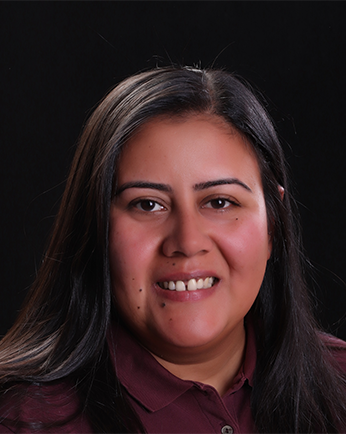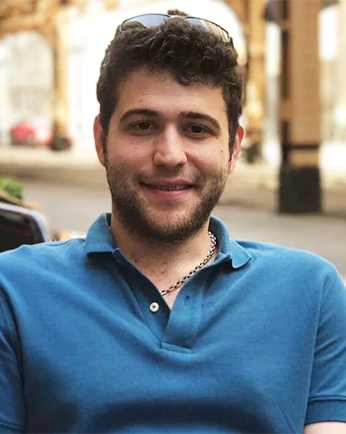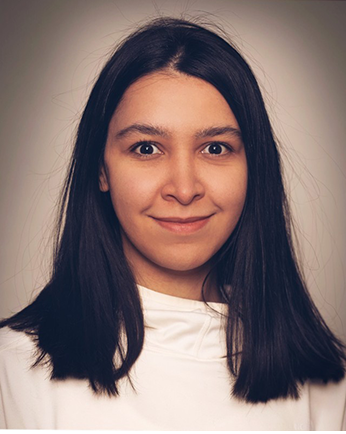Session Abstracts:
Session 7A

Assistant Professor
Florida International University
Presentation Title: Balancing Protection and Risk: Understanding the Dual Impact of Trees on Low-Rise Buildings During Extreme Wind Events
Co-Authors: Haitham Ibrahim; Fahim Ahmed; Jean-Paul Pinelli
Abstract: Urban tree damage and the subsequent estimation of associated losses during hurricanes have gained significant attention from the research community. While trees in the vicinity of residential communities can serve as windbreaks that mitigate wind loads on buildings, they also pose a significant threat due to windborne debris which causes damage to low-rise buildings, power lines, etc., in addition to traffic disruptions and consequent delays of post-storm recovery. Therefore, understanding the protective effect provided by trees, along with quantifying their probability of failure and the potentially induced damage to nearby houses becomes crucial for effective hazard mitigation efforts. This study presents the findings of a large-scale aerodynamic test conducted at the NHERI Wall of Wind Experimental Facility. The aim was to evaluate how surrounding trees impact wind-induced loads on low-rise buildings. Additionally, this research introduces a probabilistic framework to assess the failure probability of trees and the potential damage they could cause to nearby houses upon falling. Results indicated the capability of surrounding trees to reduce the critical suction zones caused by conical winds. Moreover, they reduced the total wind uplift forces on the roof. It is envisioned that the results of this study can be utilized to expand the application of the NHERI SimCenter Regional Resilience Determination (R2D) tool to include the combined effect of wind-induced and tree-induced damage to low-rise buildings. This approach will be showcased through a regional assessment case study.

Postdoctoral Scholar
Florida State University
Presentation Title: Probabilistic Hydrodynamic Modeling of Compounding rain-storm surge Flood Events for Vulnerability Assessments of Critical Infrastructures in Coastal Cities
Co-Author: Ebrahim Ahmadisharaf
Abstract: "Urban flooding caused by the compounding effects of rainfall, tides, and storm surge is a major hazard in coastal cities, which is exacerbated by sea level rise. This study conducts high-resolution probabilistic flood simulations to evaluate inundation depths and vulnerable critical infrastructure in a coastal watershed, St. Andrews, in the Northern Florida Gulf, an area that has been affected the past by major food events such as Hurricanes Michael and Sandy. Rainfall, tide, and storm surge are analyzed via frequency analyses to generate compounding flood event scenarios. The events are fed into a two-dimensional, high-resolution, unsteady hydrodynamic model. Given the high computational time, high-performance computing is utilized. The hydrodynamic model outputs estimate the inundated critical infrastructure under various compounding flood scenarios under historical and future sea levels. Our results enable risk-informed decision making for proposing flood adaptation strategies and protecting critical infrastructures. Enhanced understanding of compounding coastal flood scenarios will enhance urban resilience. Our modeling framework can be applied to other coastal cities to support flood hazard mapping."

Assistant Professor
University of Rhode Island
Presentation Title: Model-data validation of the IN-CORE damage model for buildings impacted by Hurricane Ian (2022) at Fort Myers Beach, Florida
Co-Authors: Sebastiao Appleton Figueira; Daniel. T. Cox; Andre R. Barbosa
Abstract: This study describes a data-driven validation of the open-source Interdependent Networked Community Resilience Modeling Environment (IN-CORE) developed by the Center for Risk-Based Community Resilience Planning. The validation is conducted based on a robust hindcast study including over 3,000 buildings in Fort Myers Beach, FL, impacted by Hurricane Ian (2022). The damage dataset is gathered based on a Virtual Damage Assessment (VDA) framework developed earlier to estimate the structural Damage State (DS) ranging from no damage (DS0) to complete damage (DS6). The VDA process is performed by trained undergraduate students, and cross-validated by experts to identify the level of uncertainty in the DS observations. The hazard layer is developed based on numerical simulation (ADCIRC+SWAN) and validated with observed high-water marks (HWMs). Fragility curves are developed based on limit states (LS) for buildings depending on four demand parameters: distance from the shoreline, inundation depth, water velocity, and significant wave height. A regional damage analysis was conducted utilizing IN-CORE, adopting existing flood fragility curves. The outcomes are compared in terms of the DS at the building scale to better understand the uncertainty and accuracy of the model. The results highlight the success of the VDA methodology in the data-model validation and its potential for model-to-model comparison, which can provide better insight for decision-makers and emergency planners in coastal communities.

PhD Student
University of California, Los Angeles
Presentation Title: Efficient Computational Strategies to Facilitate High-Fidelity Regional Seismic Risk and Resilience Assessment
Co-Authors: Henry Burton; Kuanshi Zhong
Abstract: The ability to quantify the regional-scale risk of building inventories is one of the essential components of evaluating community resilience. Historically, the mandated design codes for buildings have been governed by life-safety standards with no emphasis on economic loss or functional recovery. Recent advancements in the earthquake engineering domain have put in motion a national-level initiative to make functional recovery the baseline seismic performance standard. While the importance of resilience-based design standards has been broadly acknowledged by engineers, scientists, and policymakers, there is a need to develop efficient regional-scale computational frameworks. In this study, four classes of computational strategies with varying levels of fidelity are proposed. At the core, the various strategies are distinguished by the granularity of site-specific hazard and building representation. The strategies are built upon three critical pillars: 1) automation, 2) optimization, and 3) distributed computing. First, an end-to-end engine (dubbed “Auto-WoodSDA”) equipped to automate code-confirming design, perform nonlinear dynamic analyses, and assess economic loss and function recovery time is developed. Utilizing Auto-WoodSDA and hazard, the number of site-specific simulations required to represent the regional risk is optimized for each strategy. Finally, the proposed computational strategies are implemented on 17,241 residential woodframe buildings in the City of Los Angeles. The large-scale computation is made feasible by coupling automation and optimization routines with high-performing computing resources which reduced the total runtime from the order of weeks to days. Ultimately, the accuracy and efficiency of the three approaches with varying fidelities are benchmarked against the high-fidelity method.

Assistant Professor
California Polytechnic State University, San Luis Obispo
Presentation Title: State-of-the-Art Modeling of Post-Disaster Waste Material Quantity and Composition from the Kahramanmaras Earthquake
Co-Authors: Ahmad Alshami; Hiba Jalloul; Juyeong Choi; Nazli Yesiller; James Hanson
Abstract: The Kahramanmaras earthquake event ranks among one of the most destructive earthquakes in human history. In the wake of this catastrophic event, a significant quantity of waste materials was generated, severely impacting initial response and short- to long-term post-disaster recovery efforts. Despite such widespread devastation, media attention, and broad scientific interest and involvement regarding this event, few reliable quantitative estimates are available for the quantity and composition of the waste materials generated. Therefore, this study developed a modeling framework integrating OpenQuake and HAZUS-MH platforms to estimate the quantity and composition of post-disaster waste and debris materials for the event. OpenQuake was used to predict both structural and non-structural damage states of the building inventory across eleven affected provinces. Using these damage states and building-specific attributes (e.g., material type, age, occupancy class, height), a semi-empirical approach available within HAZUS-MH was applied to estimate waste quantity and composition. Modeling results indicated that approximately 26 million tonnes of waste were generated, primarily in Hatay, Kahramanmaras, Gaziantep, Adiyaman, and Malatya provinces. The majority of generated waste and debris originated from structural building components and was mainly comprised of concrete and steel and also included brick, wood, and other materials. While predicted damage states from OpenQuake generally aligned well with field observations, total debris estimates were 1-2 orders of magnitude lower than currently available data obtained using inventory-based approaches, indicating high variability and uncertainty in approaches available to estimate waste quantity and composition from earthquake events.

PhD Student
Stanford University
Presentation Title: Earthquake hindcasting and assessment of structural damage in an inventory of tall welded steel moment frame buildings
Co-Author: Gregory Deierlein
Abstract: This research aims to establish a systematic procedure and computational workflow tools to conduct earthquake hindcast assessments of structural performance of buildings. The present work focuses on case study to assess the likelihood of undetected welded connection fractures in tall steel moment frames in San Francisco that experienced the 1989 Loma Prieta earthquake. The case study is motivated by lingering questions about possible occurrences of weld fracture, which were raised in a recent tall building report issued by the City of San Francisco. Our study entails two parts: 1) characterizing ground motion inputs that are representative of the Loma Prieta earthquake at specific building locations in downtown San Francisco, and 2) the probabilistic evaluation of welded connection fracture damage triggered by this event on forty structural models, which are representative of the tall building stock in San Francisco. The first part draws upon ground motion models, spatial interpolation procedures, and nearby recorded ground motion records from the Loma Prieta event. The second part entails using the ground motion estimates as input to high-fidelity nonlinear dynamic analyses of the building archetypes that incorporate fiber-type models to simulate weld fracture. In addition to providing insights on building performance during the Loma Prieta event, we are using this case study as a testbed to develop procedures for performing similar hindcasts for other events and to implement these procedures into the SimCenter EE-UQ and R2D workflow applications.

PhD Student
University of Notre Dame
Presentation Title: Exploring the sensitivity of regional risk assessment in the context of reduced order model fidelity
Co-Authors: Sang-ri Yi; Carmine Galasso; Taflanidis Alexandros
Abstract: Reduced order models (ROMs) are known as a computationally efficient strategy within regional risk assessment. ROMs in this manner are representative of archetype buildings within the specific region, in which their configurations include the mode shape, fundamental period (linear characteristics), and hysteretic behavior properties like yielding and post-yielding characteristics, are defined based on the available information. ROM development strategies for regional risk assessment alter based on the fidelity of the utilized information. For instance, they can be developed using the readily available data for the archetype buildings. This study evaluates the effect of information fidelity on the regional risk assessment using different, hierarchical, information classes for archetype moment resisting frame structures. To quantify the potential sensitivity of the regional risk assessment to the information fidelity, a comparison is drawn across the predictions between the different ROM classes using different hazard exposure levels (different seismic intensities). This also enables further disaggregation of the observed trends to the underlying hazard intensity. Results can provide better insight regarding the key ROM attributes whose proper quantification has significant importance on regional risk assessment.

PhD Student
University of California, Berkeley
Presentation Title: Fragility field for the performance-based earthquake engineering on a regional scale
Co-Author: Ziqi Wang
Abstract: Performance-Based Earthquake Engineering (PBEE) on a regional scale involves computing the damage states of a set of structures. This computation is typically achieved through physics-based simulations or fragility curves. While the former offers a realistic depiction of the regional response, its significant computational cost generally makes it reserved for scenario-specific analyses. Conversely, the latter is efficient and offers statistical descriptions for each structure, yet it often relies on the Gaussian assumption to incorporate the correlation between individual structures. In this talk, we will present the Ising model from statistical physics as a joint distribution for damage states, namely a fragility field, for regional seismic analysis. The Ising model is derived from the pre-specified second-order moment information using the principle of maximum entropy, circumventing the need for additional information other than what is required in the conventional PBEE framework. The proposed method avoids artificial assumptions, aiming to generate reliable outcomes. The efficacy of the proposed approach is demonstrated through numerical examples using the Regional Resilience Determination (R2D) tool provided by the SimCenter. Furthermore, we delve into the interpretation of the Ising model in the context of regional simulations of PBEE, aiming to establish a novel understanding of the intrinsic mechanism among regional seismic responses.

Assistant Professor
University of Florida
Presentation Title: Improving regional building damage estimation with sparse samples using a Gaussian Process based multi-fidelity learning method
Co-Author: Amir Cheraghi
Abstract: Assessing building damages due to natural disasters or human interventions has become a pivotal concern for urban planners, emergency responders, and policymakers. Accurate and timely damage estimation can be instrumental in dictating the pace and efficiency of recovery operations. This paper introduces an innovative approach where we utilize a multi-fidelity learning method named the non-linear auto-regressive Gaussian process (NARGP) to enhance regional building damage estimation when only sparse samples are available. By coupling low-fidelity data from the HAZUS fragility model with sparse high-fidelity instrumented samples, our results indicate that this synergistic approach substantially improves the accuracy of damage estimation compared to conventional techniques that employ either data type in isolation. The methodology is implemented in a Bay Area case study. An optimal selection of the low and high-fidelity data will be discussed. From the results obtained, the multi-fidelity inference improves the HAZUS results by 55%. The proposed multi-fidelity method bridges the information gap often encountered in post-disaster scenarios, aiding decision-makers in optimizing resource allocation and response strategies.